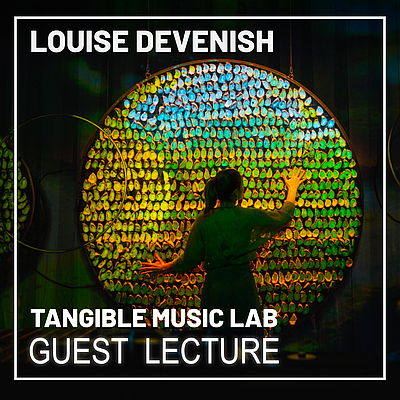Welcome at the Interface Culture program website.
Acting as creative artists and researchers, students learn how to advance the state of the art of current interface technologies and applications. Through interdisciplinary research and team work, they also develop new aspects of interface design including its cultural and social applications. The themes elaborated under the Master's programme in relation to interactive technologies include Interactive Environments, Interactive Art, Ubiquitous Computing, game design, VR and MR environments, Sound Art, Media Art, Web-Art, Software Art, HCI research and interaction design.

The Interface Culture program at the Linz University of Arts Department of Media was founded in 2004 by Christa Sommerer and Laurent Mignonneau. The program teaches students of human-machine interaction to develop innovative interfaces that harness new interface technologies at the confluence of art, research, application and design, and to investigate the cultural and social possibilities of implementing them.
The term "interface" is omnipresent nowadays. Basically, it describes an intersection or linkage between different computer systems that makes use of hardware components and software programs to enable the exchange and transmission of digital information via communications protocols.
However, an interface also describes the hook-up between human and machine, whereby the human qua user undertakes interaction as a means of operating and influencing the software and hardware components of a digital system. An interface thus enables human beings to communicate with digital technologies as well as to generate, receive and exchange data. Examples of interfaces in very widespread use are the mouse-keyboard interface and graphical user interfaces (i.e. desktop metaphors). In recent years, though, we have witnessed rapid developments in the direction of more intuitive and more seamless interface designs; the fields of research that have emerged include ubiquitous computing, intelligent environments, tangible user interfaces, auditory interfaces, VR-based and MR-based interaction, multi-modal interaction (camera-based interaction, voice-driven interaction, gesture-based interaction), robotic interfaces, natural interfaces and artistic and metaphoric interfaces.
Artists in the field of interactive art have been conducting research on human-machine interaction for a number of years now. By means of artistic, intuitive, conceptual, social and critical forms of interaction design, they have shown how digital processes can become essential elements of the artistic process.
Ars Electronica and in particular the Prix Ars Electronica's Interactive Art category launched in 1991 has had a powerful impact on this dialog and played an active role in promoting ongoing development in this field of research.
The Interface Cultures program is based upon this know-how. It is an artistic-scientific course of study to give budding media artists and media theoreticians solid training in creative and innovative interface design. Artistic design in these areas includes interactive art, netart, software art, robotic art, soundart, noiseart, games & storytelling and mobile art, as well as new hybrid fields like genetic art, bioart, spaceart and nanoart.
It is precisely this combination of technical know-how, interdisciplinary research and a creative artistic-scientific approach to a task that makes it possible to develop new, creative interfaces that engender progressive and innovative artistic-creative applications for media art, media design, media research and communication.
Environment, Climate, and Music: Artistic Research from The Sound Collectors Lab
14. Mai 2025, 17.00 Uhr Tabakfabrik Linz, Tangible Music Lab
Die Abteilung Tangible Interaction Design lädt zum Gastvortrag von Louise Devenish.
This presentation explores ways to tune in to the relationships between musical practices and global challenges of our time, with a focus on artistic research projects exploring music as an alternative means of climate communication. Music and sound have an important role to play in discourse surrounding global challenges, including the climate crisis, social and cultural justice, and geopolitical peace. At the same time, these global challenges are strongly influencing the evolution of music, shaping new directions in creative practice, influencing curatorial models, and informing conceptual frameworks and artistic research practices for musicians in all contexts. Insights into artistic research surrounding music and climate will be shared through recent interdisciplinary works from The Sound Collectors Lab (Melbourne, Australia), that each reveal different stories of human impacts on bodies of water in Australian waterways.
Louise Devenish is a percussionist whose creative practice blends performance, artistic research and collaboration with composers, visual artists, designers and improvisors. As a soloist, collaborator, and ensemble musician (Decibel, Speak Percussion, and others), she performs internationally at festivals such as MONA FOMA, Nagoya and Shanghai World Expos, Tage für Neue Musik, Darmstädter Ferienkurse, Huddersfield Contemporary Music Festival, and Tongyeong International Music Festival. Louise’s ‘interpretive flair and technical brilliance’ is recognised by APRA AMCOS Art Music Performance of the Year awards and Luminary Award, Churchill Fellowship, and an Australian Research Council Fellowship. Her performances can be heard on international labels HatArt, ezz-thetics, Immediata, Navona, Tall Poppies, Huddersfield Contemporary Records, and room40. Louise is Graduate Research Program Director (Music) and Percussion Coordinator at Monash University, where she is director of artistic research group The Sound Collectors Lab. Her writing on music is published in books, journals, and zines, encompassing Australian music, new performance practices, virtuosity, digital notation, music and gender.
